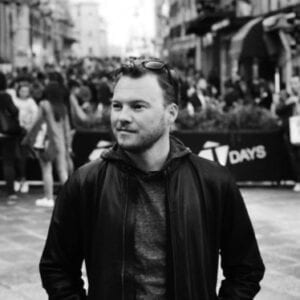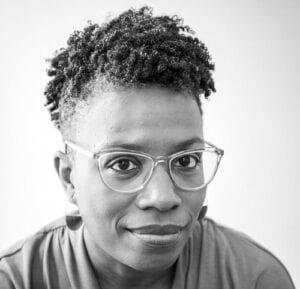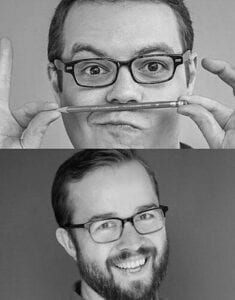Invest in yourself! Get 25% off everything this week only – use GROW25 at checkout.
The UX Writers Collective is proud to host transcripts for every episode. This episode features 12 pieces of UX writing wisdom from the first year of the podcast.
To listen to this episode, find Writers of Silicon Valley wherever you listen to podcasts:
This episode was originally hosted at Writers of Silicon Valley.
———————————————-
Patrick:
Welcome to Writers of Silicon Valley, the podcast where I interviewed the best UX writers and content strategists from around the world.
Hi everyone. Before I start the episode today, I want to take a few minutes to talk about what’s happening in the United States, around the fight for racial justice. Over the past year, I’ve heard from a number of people in the UX writing and content strategy community who feel very close to this particular issue. If you listen to the last episode with Shayla Byrd from Google, you would have heard us talk a little bit about racial diversity and accessibility in the UX writing community.
And so I feel as someone who has a podcast with a non zero number of listeners every month, it would be incumbent on me to say something. And the way I’m doing that this month is to simply point you to the people who are doing really good work in the United States and elsewhere in helping the fight for racial justice.
One way you can do that, if you are able is to help donate. Today, I just want to list off a number of organisations you can donate to that are helping the fight for racial justice. In particular, I would like to point you towards organisations that are organising bail for people who can not otherwise afford it. So again, if you can, I’d like to point you towards a number of bail funds and legal funds for protestors.
These are The Bail Project, the National Bail Fund Network, ActBlue, the Lawyers Committee for Civil Rights Under Law, the NAACP Legal Defence Fund, the ACLU and the LGBTQ Freedom Fund. I would sincerely encourage you to donate to these organisations if you can, or otherwise spread the word about the good work they’re doing.
I don’t want to say too much else about this because I feel there are voices in the community that are better equipped to do so. And so I will leave it to them, but I just wanted to start the episode with that message because it would feel wrong not to.
And I’d also encourage you to listen to the last episode with Shayla Byrd from Google. She touches on a number of issues regarding accessibility and diversity within the UX writing and content strategy community.
I certainly learned a lot during that conversation, and I’d encourage you to go and listen to it. And I think now’s a good time to think about how we as UX writers and content strategists, especially those of us in positions of power, and with the position to employ people, how we think about the work we do, and how we actively think about how we’re creating a diverse and just industry. And with that, let’s move on to the rest of the episode.
So I’m doing something a little bit different today. Over the past year, I’ve interviewed 12 different UX writers, veterans, somewhat beginners, people who are working at a number of different companies, and I’ve learned a lot, talked to people who I admire and learn from people and found out along the way that a lot of people want to learn and listen as well. And, I think over the past year or so, I’ve learned so many different things that I just otherwise would not have learned.
And so today what I want to do is take a look back. I want to look back at the last 12 interviews that I’ve conducted for this podcast. And I want to point out some pieces of wisdom that I’ve learned from everyone who’s been on here. It could be something they’re reading.
It could be a point about the work you should be doing, but I think these are more than anything, things that have helped me in my day to day work. And if you’re a beginner or a veteran, I think these are really good pieces of advice that we should take with us.
You know, now’s a really good time to reflect on the work we’ve been doing. We’re halfway through the year. And it’s a good time to think about what could we be doing better? And so I’m going to give you 12 clips today. One from each of the past 12 episodes from a different UX writer.
And I’m going to show you what stood out to me from my interviews with them. If this is the first episode you’re listening to, then this is a great introduction to the back catalogue. And I’d encourage you if you hear a clip from someone who you really admire, or you think that’s a good piece of advice, go back and listen to their episode because I’m sure you’ll get a great deal more out of the full interview as well. So enough from me, let’s get to it.
The first clip I’m going to bring you today is from the very first episode of Writers of Silicon Valley with Roy West. At the time, Roy West was the head of UX writing for Uber. He’s since left that job, but he has a long and varied history working at companies like Google, during the rise of Android OS, and he also worked at NeXT, when Steve Jobs was getting it off the ground.
We talked about a range of different subjects, and I’d really encourage you to listen to the entire interview. But one thing we did talk about is the importance of embedding UX writers with research, and really working together as a full design team. And I’ll let him explain, but I think it really reminded me that in order to work effectively as a UX writer, you really need to embed yourself with the entire organisation and the entire development cycle as well. Here’s Roy.
 But I would say that certainly at Uber, the way we’ve been trying to articulate this, is that the writers on the product design team are designers. And they need to understand that their first role is partnering with design and research, who are also designers, to create profit. And that means that the most fruitful teams, and I saw this at Google as well, is where we have writing, and design, and research tightly bound together, working together, travelling to do research together, looking at mocks together, talking through from ideation through looking at logs after you shift, they’re all working together with their particular strengths they’re bringing to the table, but becoming extremely familiar with the disciplines that they’re partnering with.
But I would say that certainly at Uber, the way we’ve been trying to articulate this, is that the writers on the product design team are designers. And they need to understand that their first role is partnering with design and research, who are also designers, to create profit. And that means that the most fruitful teams, and I saw this at Google as well, is where we have writing, and design, and research tightly bound together, working together, travelling to do research together, looking at mocks together, talking through from ideation through looking at logs after you shift, they’re all working together with their particular strengths they’re bringing to the table, but becoming extremely familiar with the disciplines that they’re partnering with.
So a writer who is not thinking about that their words are in service of user intent and of a flow with that is designed to facilitate accomplishment of a task in an as intuitive and friction-free way as possible, is missing the point of what we’re doing. I would say that it was hardest I think, for people who come out of marketing and places like that, where the words are what are… you’re trying to sell the words in a way, right? The words are drawing attention themselves in order to make, to make a connection with a reader.
Whereas with UX writing, frequently we’re trying to hide, right? We’re trying to use language to create this frictionless experience where you don’t even realise you’re looking at the words, you’re not reading anything. You were intuiting it just as you intuit the grace of the visual aspect of the graphical design in order to accomplish your task, and you get your task done, you didn’t even think about it, right? That was what was delightful. You didn’t have to stop and ponder, what do I do? It helped you get the thing done and you’ve moved on.
Patrick:
That’s some great advice there from Roy and it’s something I think about a lot. The next clip I have is from Sophie Taran. At the time, Sophia was working at Envision, which is a fully remote company. So given the current circumstances, they’re well equipped to be doing their work right now.
And if you want to listen to some of the strategies Sophie talked about regarding remote working, I’d really encourage you to listen to the full episode. I asked her at the end of the interview, what does she read about UX writing? Where does she keep up with things?
And one of the resources she mentioned here, I think is really great for people who are just getting into UX writing. And I know a lot of you have contacted me who are listeners to the podcast and ask, where do I get started? I think Sophie’s advice is really spot on here. And so I’ll let her describe it for you.

I always point people to John Saito’s medium articles. I mentioned him earlier. He was really the guy that got coffee with me very, very early on. He’s actually one of the people that come in and out that Envision was hiring a UX writer to begin with. So he has created incredible content for people who are not only starting out at UX writing, but even for people who have been writing for years and years and years. It’s all written with a very approachable tone. He was just such a kind guy and everything that I’ve seen come from his medium articles has been endlessly helpful. With that being said, there’s so much great content out there. I think Shopify has a tonne of incredible content as well. Biz Sanford not only speaks very often, I’ve been very lucky to meet her in person, but also tends to turn those talks into articles as well. So medium in general, that can be my answer. There are so many incredible people out there that are very generously sharing their thoughts and insuring a lot of the knowledge that they’ve picked up along the way.
Patrick:
The next clip I have is from Kathryn Strauss. Kathryn is a leader in the UX writing community. She runs the UX Writers Meetup in San Francisco. She works at Square as a senior UX writer.
And earlier this year, she helped us organise the UX Writing and Content Design Summit, which sadly had to be cancelled due to coronavirus. When she and I talked on the podcast last year, she mentioned something that I think about a lot.
And that’s how UX writing should really integrate with research. I think these two disciplines, they work together more than I think people realise they do. And so I’ll let her describe why you should be working with them more often.

If there’s one thing I could recommend that UX writers do is to get as closely involved with your researchers as possible. Carve out that time. Spend that time watching the videos, if you can’t be there in person. There’s nothing better than the words that the user themselves, coming out of their mouths and seeing what they call things, because we can go back and forth all day long on what’s the best term, but when you put it in front of a user and a user doesn’t understand the word at all, then you got your facts.
Patrick:
It’s good advice and something I think UX writers should take heed of more often. The next clip I have is from Hillary Black. She and I talked about chatbots last year. Now I would really encourage you to listen to her full episode because it has a lot of great information about chatbots and how to create great ones.
But I think this clip embodies the core of her message, which was to really be focused on what your chatbot does specifically and what benefit it brings to the user. So many chatbots just exist for the sake of existing.
And Hillary’s point here is that you really need to do more of the work beforehand to make your chatbot something amazing. And so I’ll let her take it away.

Yeah, totally. And I think actually most of what you are suggesting is something that I do a lot of times before I even start building a bot, before I even write hello, is sort of sit down and think about, okay, if you’re building a bot for your company, it’s kind of like a clear picture to you. Or if you have an idea, like you’re saying, “I want to try to build a bot…” For example, we built one for my wedding that I’m having in a month. We built a very simple chatbot for our guests to be able to text with us. And so I would sit down beforehand and say, okay, “Who is the audience for this? What types of functions am I going to want to include?” And sort of create an outline for yourself that is a mini strategy.
And so then you can say, “Here’s what I want this to accomplish. Here’s all the different things I’m going to talk about. And here’s who my audience is so I know how to talk.” And then you can sort of start breaking it down one flow at a time and start writing.
And then once you start writing, then you can start testing, and then once you’re testing, then you’re writing more and you kind of just build on that. And then a great idea is to, once you’re done with all of that, and you have your finished product to sort of write up, “Hey, this is what I think this is,” and then give it to someone else and they can tell you all the things that they want to change about it.
Patrick:
It’s great advice, and something we all should listen to. The next clip I have here is from Annie Adams. Now at the time, Annie was working in the fashion industry as a UX writer, and she’s then gone on to a number of different roles. I believe she worked at Uber for a while as well.
And she has a recommendation here that I really haven’t heard anyone else provide on the podcast or even in real life. And I think it’s something that we should listen to and really think about more. I’ll let Annie describe what it is.

Rather than recommending a book or an article, I’m going to recommend that people read poetry. Poetry is the best thing that a UX writer can read because it requires packing so much feeling, so much emotions, so much action, into these tiny strings of words…I just think though, any poems you can read, and try writing poems too. It’s a different sort of short writing.
Patrick:
But it’s great advice. I’m not that great of a poet, but maybe I should try more often. The next clip I have is from Ryan Farrell. Ryan is the creator of the Daily UX Writing Challenge. He’s a content strategist at GoodRX and he’s an all around fantastic guy. Love talking to Ryan. And one of the things he mentions here is about how good UX writing at its core is really boring.
We try and make the user delighted a lot. And I don’t know why we settled on delightful as the core metric for a good UX writing experience, but Ryan makes the case here that if you’re really doing your job, people are going to be bored by what you write, or at least they’re not going to notice it. I’ll let him explain.

Things can be beautiful and boring at the same time. You just have to have a appreciation for the beauty and the simplicity of how boring it is. I mean, I can think of very few better examples.
Well, the London Tubes are a good one, but in Tokyo, and I don’t know if you’ve ever been to Japan, but they have a very, very, it’s a crazy multilayered subway system where it’s about 10 different subterranean floors, and it’s all designed, and you have to speak Japanese to really get it, but even if you don’t speak Japanese, there’s visual signals that you can pick up on.
And I don’t think that there’s a whole lot of jokes written into the sub copy of those diagrams, just because the margin for error is just too great. There’s just too much at stake.
And as these systems scale, and as they get bigger and bigger and bigger, there’s going to be more need for people who can speak with clarity and who can give instructions that make sense, regardless of subtext, and regardless of nuance and culture, and all of those things. And I think that’s where UX… That’s what UX writing is. It’s really just the ultimate form of clarity in communication.
Patrick:
Something we should all think about a lot more often. The next clip comes from Angela Gordon. Angela, at the time, was working at Dropbox. And one of the things we talked about is how we can get effective critique from people.
And so I’d really encourage you to listen to the full episode for that. But one of the things she talks about is actually getting critique from people, and sharing your work with people, is a lot of effort. And it’s something that we as UX writers can think of as something that… It’s something that’ll just eventually happen.
But Angela makes the point that no, sharing your work is actually a lot of work. And so I’ll let her explain why it’s so important.

Yeah, totally. Sharing is definitely work. It’s like super valuable and it will eventually make your job easier in the… But definitely, I totally relate to that feeling like, “Oh, like this will just happen,” but then realising like, “Oh wait, like I actually have to make this happen.”
And sometimes it won’t work. And I just have to try again anyway. I do think that that is some of the most, I don’t know, I feel like it’s some of the most valuable work that I do. It’s just like trying to learn more about what other people are working on.
Even people where, someone like an engineer, our disciplines are very different and our day to day is very different, but just learning more about how they deal with copy, like bug fixes or something, or what it takes, like what are the steps they go through, and then sharing with them why I am even suggesting changing the copy. What is the value? Just those kinds of conversations take time. But I just think that over overall, it leads to a better result.
Patrick:
All of the interviews that I’ve done for the podcast, I really enjoy. But I think my interview with Tamara from Spotify is probably one of my favourites. We talked at length about what it’s like to work in Spotify and how she advocates for her work within that company. But one of the things we also talked about is what she, as a UX writing manager, looks for when she’s hiring people.
This advice I think is essential because as UX writers, there’s not necessarily the type of leadership that you might see in a discipline that’s matured over say, 20 or 30 years. There are certainly leaders in the community, but I feel like so many of us are having to learn as we go.
And so, Tamara’s advice here was really useful for not just me, but for people who are looking to get like a leg up in the industry and really advance their careers. And so she talks about some of the skills she’s looking for when she’s looking for UX writers.
And so I hope it helps you as well.

It’s necessary to be curious and to want to learn. There’s a writer on my team named Will, and he often says he loves working at Spotify because it feels like school. And I feel the same way because we just both like learning all the time and learning new skills. And I think that’s the right attitude to have.
So I wouldn’t expect UX writers to come in the door at Spotify, having all this knowledge. But if they weren’t curious about it, that would be probably a bad sign. A good example is when we do audits of error messages, for instance, and we say like, “Hey, can you help me pull the copy for all the error messages within premium checkout?” Which is a project I worked on when I first joined Spotify. And I was able to sit with the engineer and go through like, “Okay, how do we want to format this content? Like before you even pull it, what’s the format of the spreadsheet that we want to use for the output? What’s the structure data that we want to get?” We wanted to get the trigger. We wanted to get the message itself. We wanted to understand where the CTA, if there was a CTA, was leading, any edge cases, audience segmentation, around those things.
So it’s good to have that vocabulary to be able to have that level of an interaction with an engineer, rather than just like, “Hey, can you tell me what words exist? Cool.”
Patrick:
Super valuable piece of information there from a company that I think more than a few UX writers want to work at. The next clip I have is from Gordon MacRae. Gordon MacRae is the founder of the UX writing Jobs Newsletter.
And earlier this year, I published an interview about how UX writers can get hired in 2020 and the trends he’s seeing within the community with regard to job ads and what people are looking for.
And so, one of the things he mentioned about hiring UX writers, or at least applying for UX writing jobs, is that we tend to be a little bit intimidated. And well, he recommends taking a different approach. I’ll let him explain.

It always seems to be a trade off, right? Like at job ads… But I think this is good advice. Always feel like when you’re looking at what jobs to apply for, is even if you don’t hit a hundred percent of the things that are in the job ad, if you hit 75% of the things in the job ad, you should still apply for it because hiring managers and any ones that I’ve worked with in terms of creating job descriptions, always want to put in more things.
They’re trying to find this ideal candidate who doesn’t exist. It’s like we’re talking about the JavaScript thing, right? Like, I’d imagine that company, if they had a really good UX writer to come in and they didn’t know JavaScript, they’re not not going to hire them because of that one thing. They’ll find someone else who can do that bit. So if you can demonstrate that you can do 75% of the job ad really well, you’re already ahead of other candidates. I think it’s always really off putting, when you look at a job ad and you think, “I don’t really know how to do this, or I’ve done this once. And like, maybe this isn’t my main skill,” but you’re sort of only competing with yourself, then you don’t know who else is applying for the role.
Patrick:
Andy Welfle and Michael J. Mets published what I think is the best book about UX writing on the market right now, Writing is Designing. And in our interview, we talk a lot about the book, but one thing we also talk about is with any UX writing team, how can you provide feedback? What is the best way to critique each other’s work? And we had a great discussion about getting the balance right between giving good, valuable criticism, versus letting your ego get in the way. And so here’s their description of how to get the best out of a critique process.

So it wasn’t important in our critiques is allowing the person receiving the critique to scope the level of feedback they’re looking for. So if they want sort of like general thoughts and opinions, “Hey, let me know what you think about this message and this kind of framing of it. And just I’ll just take any kind of feedback you have.”
That’s one thing, but sometimes people, maybe they haven’t really gotten a chance to dig into the message itself yet, and they’re just kind of focused on the structure of it. Or maybe they’re just focused on the word choice and they want to try to arrive at that. Just allowing them to decide the kind of critique, like feedback, they’re looking for, and then also the moderator kind of holding the feet to the fire for everybody else to stick to that.
Yeah, I’ve had really good success, including all kinds of folks in my critiques at work. And that would extend to designers, product mentors, developers, anyone on the team. And part of the reason that has been such a good exercise is it helps people see the constraints more clearly, and helps them understand why we’re making certain decisions.
So like there was an example recently where we had a chatbot that we were working on a closing for. And someone suggested, “Well, why don’t we just say at this point, like have a great day to the people as we’re signing off, just to make it more friendly.” And on the surface, that seems like a really great idea because it’s for customer service and we want to make sure it’s friendly. But that person may have just been in a car accident or may have had their house burned down or maybe had their house broken into. And that may be why they’re chatting that day. And so it could be really bad. And so to be able to have those conversations with the team really, really helps and helps them see the constraints that you’re under as a writer and all the things you’re thinking about, and puts them in the user’s shoes.
Patrick:
We’re getting to the pointy end now. Only two more clips to go. This next one, I think is super valuable. Ben Barone-Nugent works at Netflix where he’s a content designer. One of the things we talked about in his interview is the power of AB testing.
But what comes before that is developing a solid hypothesis for testing whatever copy you’re working on. In this clip, he talks about the importance at Netflix of coming up with a really concrete hypothesis, and then working with your team to test that in practise.
I think this is important because I think a lot of writers don’t necessarily have as much experience or practise with testing or testing methods as they would like.
And he had been touches on some of the science we need to understand before we can just test whatever copy we’ll like.

So what I learned is the best way to get someone on board, like a product manager or producer or an engineering leader, or designers, is to have a really compelling and clear hypothesis. Sort of an If-Then sort of statement, right? Like if we do X, then Y will happen, and here are some variants that will help us get at that. That’s also just a good way to start discussions. And I think part of that is also being open to feedback about those statements.
I like presenting hypotheses really clearly like that, and simply. And I spend a lot of time thinking about that. Sometimes I spend more time thinking about that than the words itself and how I need to pitch that to folks, because it’s always a good way to tease context out of people as well and discussions. So I might show somebody that hypothesis, and they’re like, “Oh, actually we tested something similar to that two years ago. And here is the result.” You know what I mean? And then you can kind of start building on that and have even more of a fine hypothesis and get it even deeper into an idea.
And that’s certainly something I realised a lot when I joined Facebook as well, but Facebook was a little different because there was… We had a huge number of uses, so we could really just do like testing more quickly. There wasn’t as much pressure on me to have the hypothesis clearly. People would be like, “Yeah, if you’ve got a couple of language for it we can just test it with a small percentage and see what goes on.” And that was cool. And that was really awesome as a content strategist there.
But when I came to Netflix, and then you kind of coming into Netflix, that there was a lot of focus placed on discussing and debating ideas. I don’t want to sound debating, really say debating too much because that makes it sound like, a bunch of men yelling at each other and stuff like that. It’s not really like that. It is just more about really frank discussions, and often those discussions will conclude with somebody saying, “I don’t agree with you, but I agree that we should test it.” Just like a degree of humility there. I certainly saw that at Facebook, other places too. There’s a lot of impetus put on those sorts of behaviours at Netflix, which I think is great.
Patrick:
Some great stuff from Ben there. And I’d really encourage you to listen to the rest of that episode as well. We come to our final clip now. And this clip comes from last month’s episode with Shayla Byrd from Google.
I picked this particular clip because I think it really sums up what it is as UX writers and content designers that we do. And the importance of our work. In particular, she touches on something I think is relevant right now.
We can get bogged down in making products talk like how we want them to talk, or how we think the business should make them talk. When instead, we need to be advocating for our users.
I mentioned at the start of the episode that Shayla and I talked a lot about racial diversity and accessibility in this episode. And I think her point here really speaks to that. And so I’ll let her explain.

Because working as a UX writer, you can get very close to the product. And then you become a part of like the insider-y speak of those products and your gift, your magic… Like at Google, I feel like everybody brings their magic to the product process. And even if you don’t know what that person actually does or how they do it, you know they bring their magic and they make things better.
And so part of UX writer’s role of bringing that magic to the product process is like advocating for the user and knowing what words people are saying, which things are outdated, which things sound cool, but don’t mean things to people.
And so the closer you can be to the wider group of diverse people, the better your products will be because then you’re basically asking the people who are using your product what they think, what words they’re using, what language that you’re using, what they like, what they don’t like.
And if the pool of people that you’re speaking to during research, the people that you’re pulling the language from, the people that you’re designing for, those are the people of the world. So ideally, the people that are designing those products for those people of the world, should reflect what the world looks like.
And I don’t think that is an unreasonable ask.
Patrick:
I don’t think it’s too much to ask either. So that’s the episode for today. I really hope you enjoyed those 12 pieces of UX writing wisdom from the past year of Writers of Silicon Valley. Thank you to everyone who’s been listening to the podcast, sharing the podcast, giving me your feedback. I think it’s made for a better show.
Thank you for sticking with me through all the audio glitches and everything. I’m really looking forward to the next 12 months, and speaking with more UX writers and content designers about different and intriguing topics that will help the community.
Please, if you can, donate to those organisations I’ve mentioned at the beginning of the show, or at least spread the word if you can. If you have any questions or emails or anything you want to send me, please email them to me or message them to me on LinkedIn.
You can contact me at Patrick@uxwriterscollective.com. I’ve heard from a lot of people who have just gotten into the industry and have used the podcast as a springboard and they’ve finished the entire thing. So that’s awesome.
Thank you so much for that feedback. I’d really love to hear from you.
If you like the podcast, please leave a review on Apple podcast and it helps others find it. And I hope you’ll come back again next month. I’m going to have an awesome interview for you then too. So until then, take care.
Over 125 content designers reveal how they use language models, their thoughts on the future of the industry, and more…
We’ll also send you news, discounts, job listings, and more
